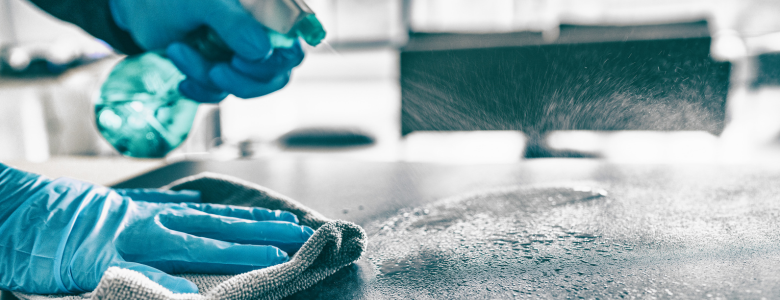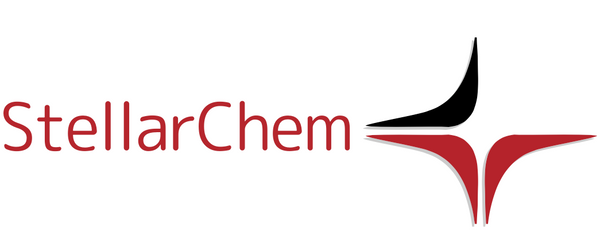
How to Use a Commercial Disinfectant Effectively
Imagine this: a Friday night in your cafe, and a customer spills their lemon-infused cocktail all over the bar. Panic? Not you, mate!
You’ve got your commercial-grade disinfectant on standby. But wait, are you using it right?
Keeping your space clean with a disinfectant cleaner isn't rocket science, but it’s not child’s play either. Get it right, and you’ll keep your customers safe. Get it wrong, and well, let’s not go there.
So, how do you effectively use a commercial disinfectant? Choose the proper commercial-grade disinfectant for your surfaces, pre-clean the area, and apply the product correctly. Follow the contact time and rinse or wipe as needed.
Sounds easy. But there’s more to it than meets the eye. Let's find out.
Before we get into details, you should check our I-Fresh Multipurpose Sanitiser Spray, which is suitable for making cleaning a breeze.
TL;DR: Using Commercial Disinfectants Effectively
- Choose the Right Product: Select a commercial-grade disinfectant suitable for your surfaces, like Quats, chlorine-based, alcohol-based, or hydrogen peroxide.
- Pre-Clean First: Clean surfaces to remove dirt before disinfecting. Disinfectants work best on clean surfaces.
- Apply Correctly: Use the disinfectant according to the label—spray, wipe, or immerse. Ensure even coverage and follow the recommended contact time.
- Handle Different Surfaces: Use appropriate methods for hard surfaces, fabrics, and sensitive equipment. Follow specific guidelines for each.
- Avoid Common Mistakes: Don’t mix different disinfectants, skip cleaning before disinfecting, or use the wrong product for sensitive surfaces. Follow dilution instructions and store products properly.
What Is a Commercial Disinfectant
A commercial-grade disinfectant differs from your average cleaning stuff from the supermarket. It's a tough, multipurpose cleaner designed to deal with the unique challenges in institutional and commercial facilities like our busy cafes and restaurants.
This sanitiser kills germs, bacteria, and viruses on surfaces, so it’s the go-to for keeping your place hygienic and safe for staff and customers. Each disinfectant cleaner is independently tested to ensure its effectiveness.
Here are the main types you'll come across:
- Quaternary Ammonium Compounds (Quats): All-rounders, effective against a broad range of nasties.
- Chlorine-based: Think bleach - vital stuff for food prep areas.
- Alcohol-based: Quick-drying and ideal for high-touch areas.
- Hydrogen Peroxide: Eco-friendly option that breaks down into water and oxygen.
Remember, using the suitable disinfectant correctly is critical to keeping your place spick and span!
Want to know why pros use commercial-grade cleaners? Read this guide and level up!
Preparing for Disinfection
Before you go germ hunting, let's get ready to use your commercial-grade disinfectant cleaner properly. First, choose a product that suits your needs—maybe you want a solvent-free, pH-neutral option or disinfectant with a pleasant fragrance. Whatever you choose, always read the label.
Gather your gear: You'll need a bucket, bottle, mop, and cloth. Don't forget your PPE—gloves are a must!
Now, here's a top tip: always clean before you disinfect. Yes, cleaning and disinfecting are different!
Cleaning removes dirt and grime from surfaces while disinfecting kills the nasties you can’t see. Start by cleaning those hard surfaces with hot water and detergent. This solution works for most surfaces, from bench tops to floors.
Once your washable surfaces are clean, you're ready to sterilise. Some products need you to add water, so check the instructions.
Check out this article to make sure you're choosing the right sidekick.
Proper Commercial-Grade Disinfectant Application Techniques
When using your commercial-grade disinfectant, getting the mix right is vital. Always follow the directions on the label for correct dilution.
Some products are ready to use, and some require you to add water. Measure carefully—too weak will not do the job, and too strong will be wasteful and potentially harmful.
Even coverage is crucial to disinfecting. Think of it like painting—you want to cover every inch of the surface without leaving any gaps for germs to hide. Work methodically, starting from one corner and working across the area.
Now, let's look at the main ways to apply your disinfectant:
- Spray: This is great for larger areas or hard-to-reach spots. Spray evenly so the surface stays visibly wet for the required contact time. It is also suitable for quick touch-ups during busy periods.
- Wipe: This is ideal for smaller surfaces or items you can’t spray on directly. Saturate your cloth with the disinfectant solution and wipe thoroughly. This method gives you more control and ensures you get all the spots.
- Immersion: This method is for smaller items you can soak. Fill a bucket or sink with the diluted solution and submerge the items thoroughly. It is suitable for thoroughly cleaning and disinfecting utensils or small equipment.
Looking for the right mix of cleaners for your business? Check out our full range of commercial cleaners, descalers and sanitisers – we have one for every job!
What Is Contact Time
Contact time is crucial when using a commercial-grade disinfectant cleaner. It's the time your multipurpose cleaner needs to stay on the surface to kill germs and bacteria. Think of it as giving your disinfectant time to do its job.
Different germs need different contact times. For example, tough bacteria like staphylococcus aureus may need longer than others. Check the product label for the time - it could be anywhere from 30 seconds to 10 minutes.
Here’s the rule: keep the surface visibly wet for the full contact time. If it dries too quickly, you may need to reapply. Remember, shortcuts here mean you’re not killing all the germs, so patience pays off in cleanliness!
Addressing Different Surfaces
You’ll encounter different surfaces that need cleaning and disinfecting in commercial facilities. Each surface type requires a specific approach to get it sanitised without damaging it. Let's break down how to tackle different areas in your venue with your commercial-grade disinfectant:
Hard, Non-porous Surfaces
This surface includes bench tops, floors, walls, glass, and toilets. These are your business's workhorses. Apply your disinfectant cleaner liberally and evenly.
For most surfaces, a lemon-scented or fragrance-free blend works well. Spray directly from the bottle or use a cloth soaked in the solution. Recommended contact time: 5-10 minutes.
Soft Surfaces and Fabrics
Upholstery, curtains, and carpets need special care. Use a disinfectant cleaner specifically approved for fabrics. Test on a small, hidden area first.
For larger areas, use a spray application. Allow the surface to air dry completely. Recommended contact time: Follow product instructions, typically 5-10 minutes.
Electronics, Appliances, and Sensitive Equipment
For POS systems, phones, and kitchen appliances, use alcohol-based wipes or sprays containing at least 70% alcohol. Don't spray liquids directly onto the equipment; apply the disinfectant to a microfibre cloth first. Be careful with display screens; don’t let moisture enter any openings.
Unplug larger kitchen appliances before cleaning. The recommended contact time is 30 seconds to 1 minute, but always follow the product's instructions.
Are different surfaces giving you grief? Read this guide and find your match!
Special Considerations for Different Commercial Facilities
Commercial disinfectants are versatile, but different facilities have different needs. Let’s explain how to tailor your disinfection approach for various institutional and commercial facilities. Remember, these products are much stronger than domestic cleaners.
Healthcare Facilities
Disinfection is crucial in medical facilities. Use hospital-grade disinfectants on all surfaces, floors, walls, and bathrooms. Pay extra attention to high-touch areas like door handles and reception counters.
Avoid fragranced products like lemon disinfectant, as some patients may be sensitive. Ensure your disinfectant is suitable for medical environments and effective against various pathogens.
Food Service and Hospitality
Cafes and restaurants focus on food preparation areas, dining surfaces, and bathrooms. Use food-safe disinfectants in kitchen areas, especially if your facility has septic tanks.
For front-of-house areas, you can use a multipurpose cleaner with a pleasant fragrance on floors, walls, and glass surfaces. Remember to disinfect menus and payment terminals regularly.
Offices and Retail Spaces
These areas need to balance effectiveness and user-friendliness. Disinfectants can be used on high-touch surfaces like door handles, lift buttons, and shared equipment.
For general cleaning, a multipurpose cleaner is often sufficient. Pay special attention to bathrooms and rubbish bins. If pets are allowed in the space, ensure your disinfectant is pet-friendly.
Remember, different areas may require different approaches, so adapt your cleaning routine accordingly.
Want to keep your business clean and green? Visit this guide and make Mother Nature your number-one fan!
Common Mistakes to Avoid When Using Commercial-Grade Disinfectant
Even the best disinfectant cleaner will only work if used correctly. You are using these powerful chemicals wrong in your business if you are:
- Mixing different disinfectants, even if they have a pleasant pine fragrance or popular lemon disinfectant scent.
- Applying disinfectant without cleaning dirt and grease first.
- Using the wrong product on sensitive surfaces like painted surfaces, plastics, or metals.
- Not following contact time and wiping too soon.
- Not diluting concentrated products correctly.
- Assuming one product works for most surfaces.
- Overusing disinfectants—which can harm the environment.
- Storing disinfectants improperly or using from an unmarked bottle.
- Choosing products based on fragrance rather than effectiveness.
- Not using solvent-free options when you should.
Interested in a lemon-fresh scent or something more low-key? Check out our full range of IFresh products and find your cleaning buddy!
Disinfectant Cleaner Maintenance and Safety Tips
Follow these tips to keep your commercial-grade disinfectant working effectively and safely. These tips apply whether you're using a multipurpose cleaner designed for benchtops, floors, walls, or other washable surfaces.
- Store disinfectants in their original, unmarked bottles.
- Keep products out of direct sunlight and extreme temperatures.
- Inspect expiration dates and discard expired products.
- Use pH-neutral products on sensitive surfaces like painted surfaces, metals, and plastics.
- Wear protective gear when using cleaners.
- Ventilate when using strong-smelling products, even those with a popular fragrance.
- Clean equipment (mops, cloths) you regularly use for disinfecting.
- Never mix different disinfectants, even if they have a similar lemon or pine fragrance.
- Rinse food-contact surfaces thoroughly after disinfecting.
- Keep disinfectants out of reach of children and pets.
Want to be a cleaning superhero? Read How to Use Surface Cleaners Safely and keep your space clean and dry!
Conclusion
Using a commercial disinfectant effectively is essential to keeping your business clean and safe. Remember to choose the right disinfectant cleaner for most surfaces in your venue, whether you like a lemon or fragrance-free blend.
Always follow the instructions on the bottle, respect the contact time, and apply the cleaner correctly for each surface type. Now, you’ll have a clean and welcoming space for staff and customers. Stay safe and keep it clean, mates!
Need more cleaning tips? Check out StellarChem – your one-stop shop for all your cleaning needs for Aussie businesses!
Frequently Asked Questions
What is the strongest disinfectant?
Bleach and hydrogen peroxide are the most potent disinfectants. They kill a wide range of germs but must be used carefully.
Which chemical is the most powerful disinfectant?
Sodium hypochlorite (bleach) is one of the most powerful disinfectants, effective against bacteria, viruses and fungi.
What is the best disinfectant for business?
The best commercial-grade disinfectant depends on your needs, but Quaternary Ammonium Compounds (Quats) are famous for their effectiveness and safety in commercial applications.
What are high-touch and high-risk areas?
High-touch areas are surfaces or spaces with frequent contact, such as door handles, light switches, and counters. High-risk areas are restrooms, kitchens, and areas with high traffic.
